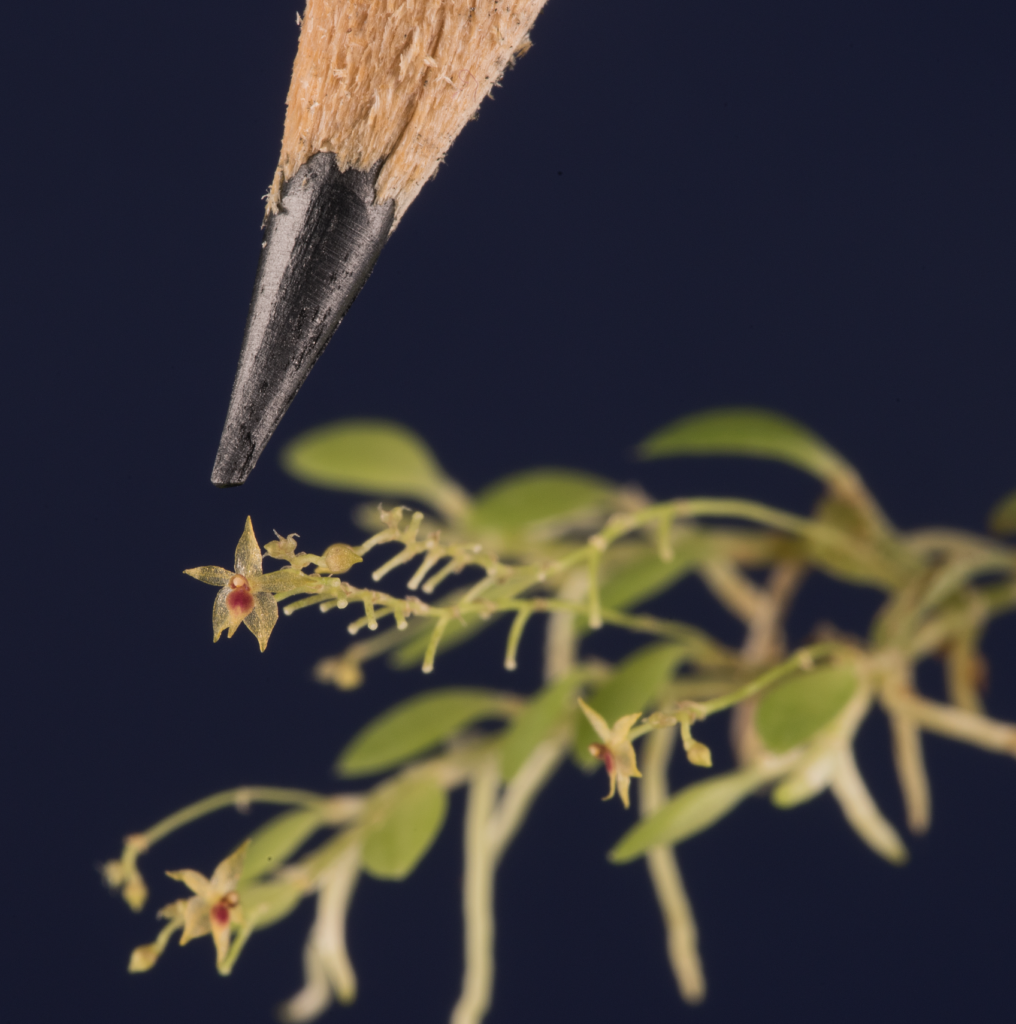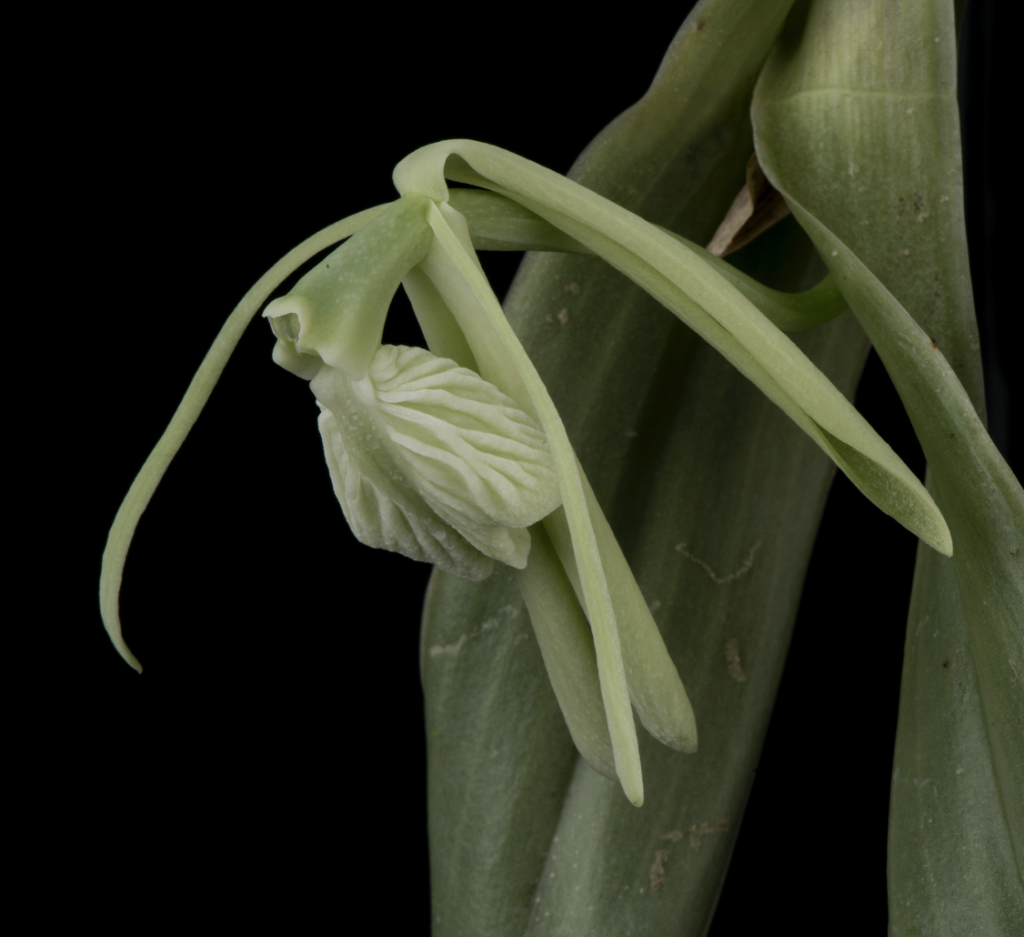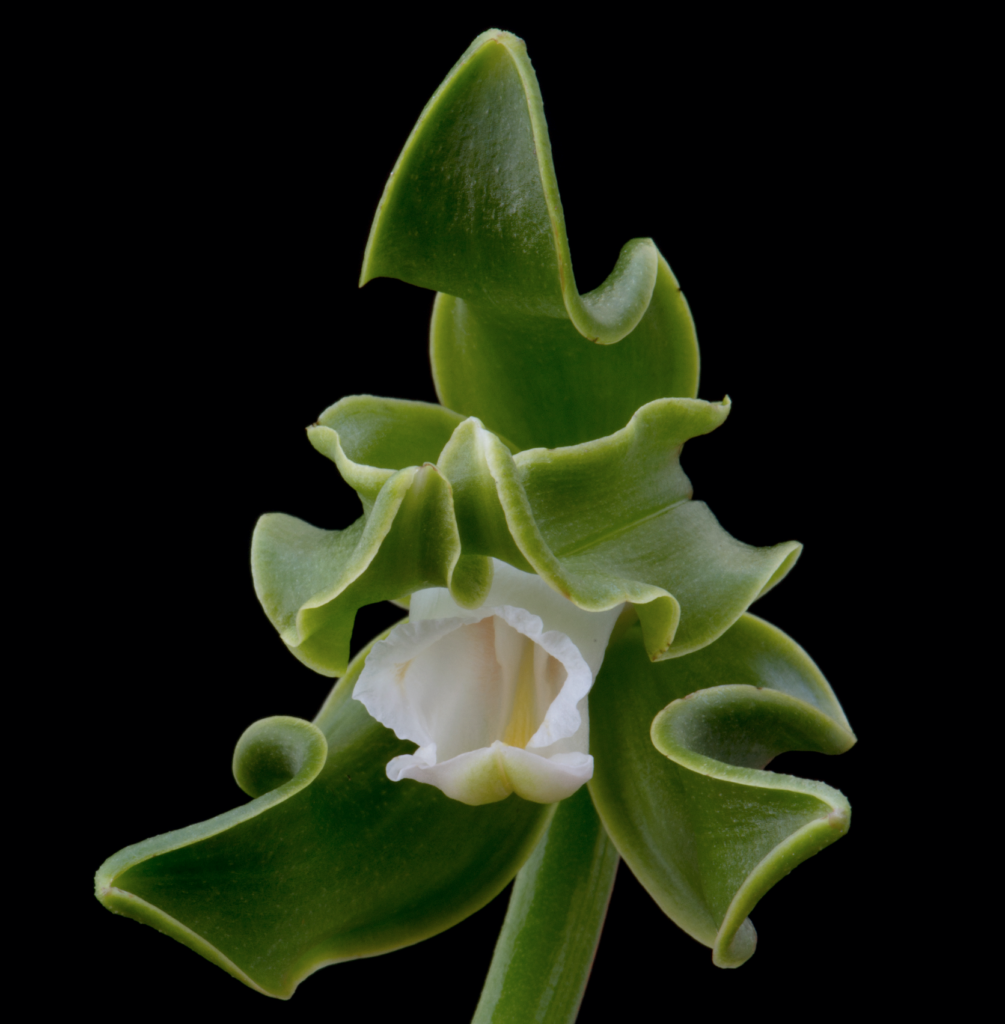
Subtribe Pleurothallidinae is the largest taxonomical group in the Orchidaceae family. Estimates suggest that with a whopping 5500 species recognized today, pleurothallids represent about one fifth of all known orchids. They are endemic to the tropical forests of the new world, being one of its major floristic components. The unparalleled diversity of pleurothallids make for a very interesting group to understand species radiations, with undescribed species and lineages still being discovered with frequency. Dozens of new species are discovered every year in Central and South America, and many more are yet to be discovered. This very recent explosion in biodiversity is an important model to study evolution. One of their most intriguing pleurothallids is genus Platystele, which includes some of the tiniest representatives amongst flowering plants.
Epidendrum has been suggested to be a promising model system for evolutionary and ecological studies in the Neotropical region. Given its species diversity, the broad biogeographical and ecological range, and the variation in morphology, chromosome numbers and ecological interactions, the genus presents a rich source for intriguing and yet unanswered questions. Epidendrum is also a prime candidate to study speciation and this makes establishing precise species boundaries and diversity estimates in the genus extremely important. There is a notorious gap between the number of species described and estimated for this genus which may have serious consequences when it comes to establishing biogeographical patterns, biodiversity hotspots and conservation priorities.


The famous vanilla flavoring naturally comes from the fruit of a tropical orchid. There are more than 100 wild species of Vanilla growing in the tropical forests worldwide, but the fragrant species are endemic to the Neotropics. Despite its cultural and economic importance, the systematics and biology of many Vanilla species remains poorly understood. Most species are rare in the wild but have very broad distributions spanning several countries, and because of this the same species is given different names across its broad distribution. Understanding the diversity, population dynamics and natural variation of Vanilla species is a priority for conservation efforts. Especially considering the low genetic variation found within the cultivated vanilla crop.